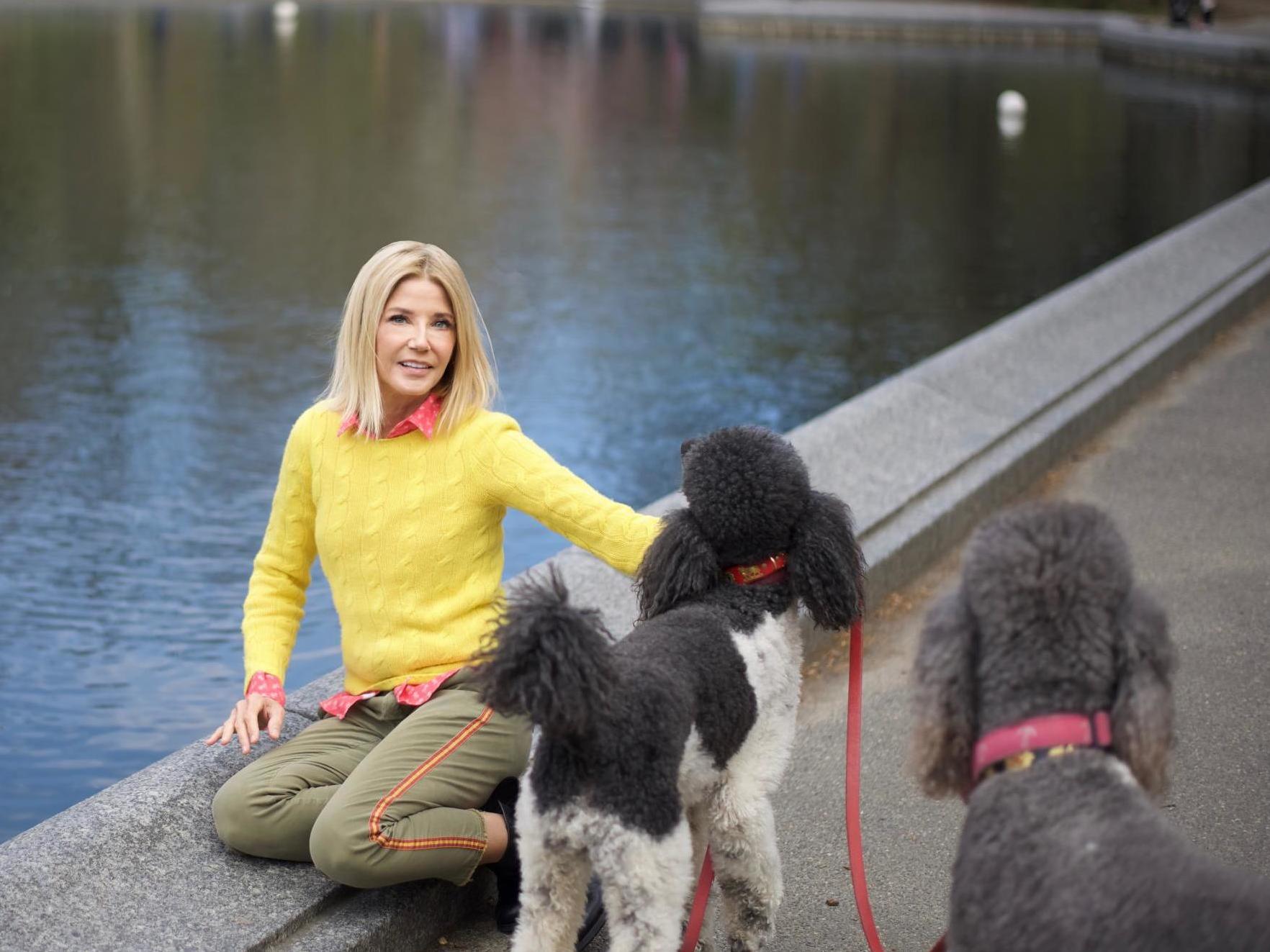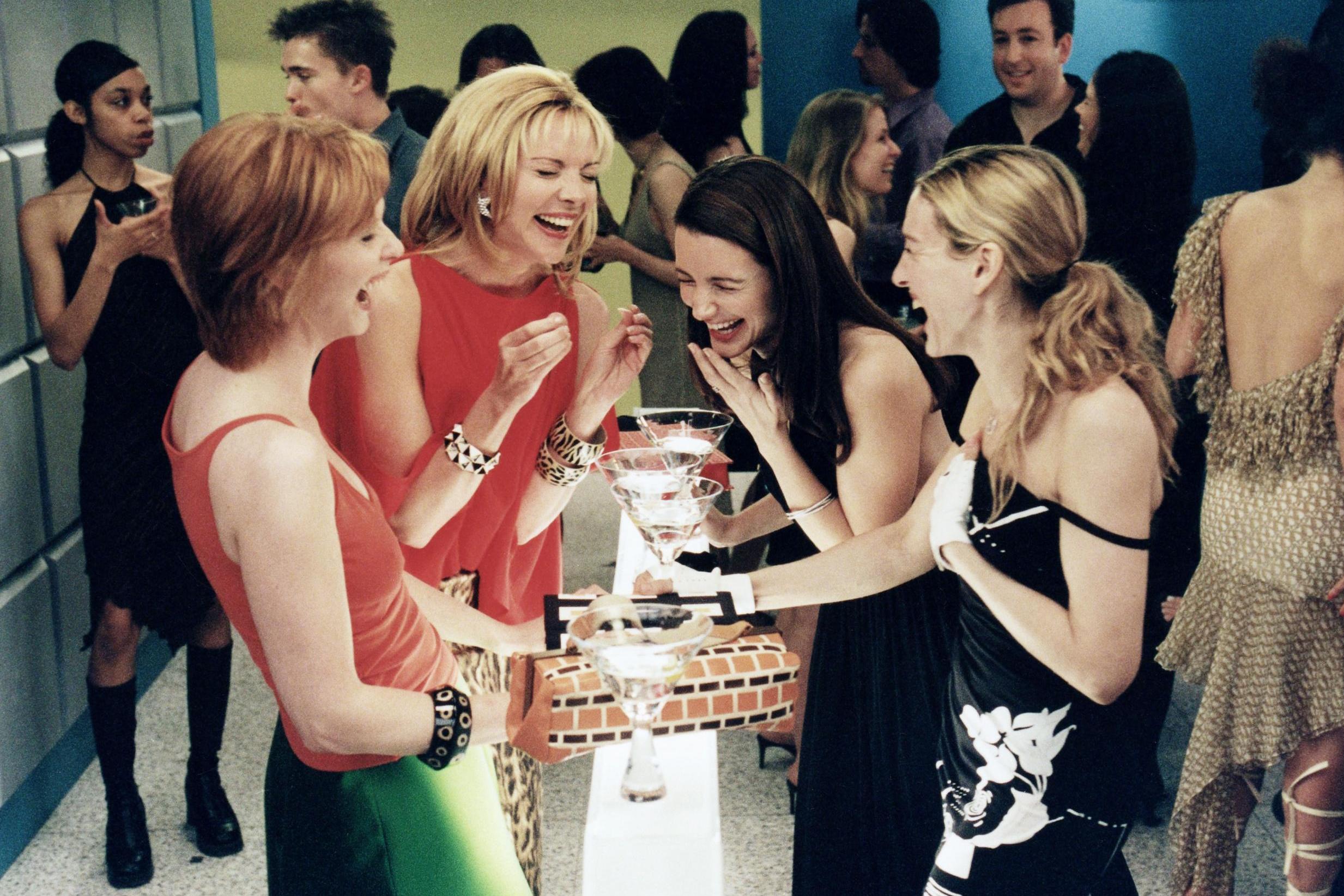Sex and the City writer Candace Bushnell: ‘Manhattan was the Wild West of #MeToo behaviour’
The author speaks to Olivia Petter about feminism, dating in your fifties, and why Sarah Jessica Parker is the antithesis to Carrie Bradshaw


Candace Bushnell will never be as famous as her alter ego Carrie Bradshaw. “I swear every Sex and the City fan account has at least 200,000 Instagram followers,” the author says. “I have 20,000, I’m like, ‘what the f***?’” It’s been 21 years since Bushnell’s dating column in the New York Observer spawned one of the most adored franchises in modern memory. Sex and the City comprises Bushnell’s best-selling book – a compilation of her columns – an award-winning television series and two films. She has written eight books since, two of which were also adapted for TV, but Sex and the City remains Bushnell’s most feted accomplishment. The last offering, Sex and the City 2, came out almost a decade ago, but rumours of sequels still swirl, alleged feuds between castmates make headlines, and, as Bushnell pointed out, those Instagram accounts are flourishing. “I’ve seen Carrie Bradshaw in a beer commercial,” she says, talking with the nonchalance of an artist who relinquished control of their art long ago. “The characters have stepped into another dimension, they’re not anchored to real life.”
But real life was where it began. As a columnist, Bushnell turned flings and friendships into sparkling copy, using shrewd social commentary to confront the rigid sexual politics that defined Manhattan’s dating scene in the mid-Nineties. In this pre-Tinder era, men came and went in tribes – “modellisers” (only sleep with models), freaks (steal secondhand books) and “f*** buddies” (no explanation needed) – while women called the shots and wore expensive shoes. The HBO programme, which ran from 1998 to 2004, was praised for its depiction of its female characters as strong and unhampered, paving the way for the likes of Girls and Fleabag.
But a lot has changed since Carrie, Miranda, Samantha and Charlotte were running around Manhattan in their Manolos. After finding fame and success through the show, Bushnell married professional dancer Charles Askegard, who was 10 years her junior. The couple divorced in 2012 after a decade together, prompting Bushnell to trade sex and the city for celibacy and the countryside. She moved to her home state of Connecticut and went full pastoral, doing little else other than riding horses, walking her dogs – poodles named Pepper and Prancer – and writing. But after four years, she became restless and decided it was time to give Manhattan and, well, sex, another go. This is the where her new memoir, Is There Still Sex in the City?, picks up and is the reason she’s talking to me today. The sex itself might be more on the discrete side, but talk of viagra (“the price men pay for youth”) and oral sex (“some women don’t like it”) is enough to conjure up an image of Bushnell and her girl gang getting candid at cocktail hour.
“I never really thought about my fifties that much,” says Bushnell, now 60, over the phone from New York, her dogs barking in the background. “Suddenly you’re not a demographic and you realise you’re kind of invisible. You don’t see many middle-aged women out there doing things. It’s like society is telling you to disappear, but this is not a group of women that’s going to disappear.” Why not? “How old are you?” Bushnell retorts. It’s only a few minutes into our conversation. I tell her I’m 25. “OK, so you have no clue.”
Bushnell is confident. As we speak, she rattles off opinions with pace, often ending sentences by quipping “OK?” with such assurance that it sounds more like an exclamation than a question. There’s a lot of swearing, laughing and thinking aloud; she’s unfiltered (“Sex and the City was bigger than Girls”, she tells me, breezily, and she’s probably right). In Is There Still Sex in the City?, Bushnell’s voice is just as distinctive. To the uninitiated, the frequent philosophical musings (“Have I just found a Tinder unicorn?”) might jar, but to any Sex and the City fan, reading them is like taking a bite from your favourite microwave meal, the one you thought they’d stopped selling. Even when one of Carrie’s most ridiculed aphorisms from the show, “I couldn’t help but wonder”, makes an appearance, you can’t help but wonder what you’ve been doing without Bushnell’s voice for all these years.
That’s not to say the memoir is infallible. In her fifties, Bushnell navigates the dating scene much like she did in her thirties, trading in tribes and archetypes, such as “cubs” – young men who romantically pursue older women. “Are middle-aged women now catnip for younger men?” she asks with that teasing Carrie Bradshaw style. The book can, at times, read like a myopic seduction manual for middle-aged women looking to manipulate men, with sections such as “Beware the Cub Romeo” – younger men who become “excessively emotional in the way that only twenty-somethings can be” – and “The Unexpected Cup Pounce”, known in some circles as “lunging” but in this instance referring to a younger man kissing an older woman out of the blue. It’s also aimed entirely at heterosexual women, leaving other demographics out of the conversation. While some reviews have been unfavourable ("It’s disconcerting that this former sexpert sounds so out of touch," wrote The Independent's Roisin O'Connor), the book will win people over for the same reasons Sex and the City did: through its enduring celebration of female friendship. “A couple of people disliked the book because they thought I was implying that women don’t need men,” Bushnell says. “But that’s kind of the point.”
Bushnell calls herself a feminist but is the first one to admit that her Sex and the City columns would be very different in 2019. “I think they would be all about #MeToo,” she says, recalling how Manhattan was once the “Wild West of #MeToo behaviour”, complete with “touching, grabbing and threats when you’re out at night”. But, like other women of her generation, Bushnell accepted it at the time. “You didn’t have a choice,” she explains. “We’re only realising how awful it was now thanks to the internet, because more people can share their stories and we hear how common they are. These are worldwide problems. It’s not one or two men behaving badly here and there.” That said, the #MeToo movement is not mentioned in the memoir. Did she listen to Sarah Jessica Parker on US radio last month talking about experiencing sexual misconduct on set as a child actor? “No I didn’t, but I’m sure that’s the tip of the iceberg. I’m not saying for her, but I suspect there are hundreds of child actors out there who have experienced that.”

The TV series would look different today too, Bushnell says as we move on to discuss one of the biggest criticisms levelled at Sex and the City: its all-white central cast. “Would people cast a show like that today? No, they wouldn’t,” she says, pointing out that the programme debuted in 1998. “The truth is that one of those characters could’ve been...” Bushnell pauses, aware of her phrasing. She reconsiders. “Nobody is deliberately saying, ‘We’re going to cast this show all white’. It doesn’t work like that. It’s just the time and the actresses who were available. If somebody [had] said: ‘Hey, here’s an African-American or Hispanic or diverse person who’s right for this part’, nobody would say no. There’s not as much calculation in these things as people think. It was just really a reflection of the time.”
Even though the last film was panned by critics – Bushnell admits that the humour was overblown – fans still want more Sex and the City. A third film was in the works, with the script rumoured to kill off Carrie’s husband, Mr Big, and follow her journey through grief and recovery. But the project was shelved for reasons that are still unclear, though it’s thought that a fallout between actors Kim Cattrall and Sarah Jessica Parker, who played Samantha Jones and Carrie Bradshaw, respectively, is to blame. “I don’t know why people are so desperate for them to be friends,” says Bushnell, proceeding to compare the high-profile actors to regular colleagues. “At the end of the day, it’s just a frickin’ job, and these are people who work in an office that might not look like yours or mine, but it’s still an office. Honestly, I don’t know of any feud,” she adds, describing both women as “so nice”. “These are people who are at work together and I just think they have different personalities. That’s all there is to it.” Does Bushnell keep in touch with Parker? “I never was in touch with her,” she says, explaining that they had little in common. “She was married the entire time we were filming. Her life is really the opposite of Carrie Bradshaw's,” says Bushnell, who got married aged 43. “She’s always been with a guy and is very family-orientated. I see her at parties and she’s very nice, but we have different circles.”
One person who Bushnell does keep in touch with is Chris Noth, the actor who played Mr Big. The two live in the same building and Noth, 64, played matchmaker with the author’s current boyfriend, Jim Coleman, 57, whom she refers to in the memoir as “My New Boyfriend”. She says he’s quite similar to Big, the playboy financier supposedly based on Bushnell’s ex, Ron Galotti, a former Condé Nast publisher. “He’s never been married. But he’s a wonderful boyfriend,” she says of Coleman. “He’s a teddy bear Big.”
Bushnell has a busy year ahead. She's currently working on a young adult book with author Katie Cotugno, Rules for Being a Girl, and is developing a TV adaptation of Is There Still Sex and the City?, the rights of which were snapped by Paramount Television prior to publication. Her net worth is estimated to be in the $40m range. Why then, does Bushnell write in one part of her memoir that she sometimes feels disappointed with her life? “I think I should’ve done more,” she sighs. “Why wasn’t I bigger? Why didn’t I have more confidence?” Bushnell proceeds to tell me that her home is “falling apart” and she’s struggling to sell her house in Connecticut. “I also think I should’ve fought harder to get what I want in terms of TV,” she continues. “I had a lot of opportunities to do a reality show and I said no.” The idea was that she’d front her own programme and give people an insight into the original Sex and the City lifestyle. But Bushnell was worried it would step on the HBO programme’s toes, which, looking back, she regrets. “Being on TV is so big and important now, I should’ve done it.” It’s not too late, surely? “Oh, it’s fine. Instagram TV is the new TV anyway. I’m on Instagram all the time.”
Is there still Sex in the City? by Candace Bushnell is out now (Little, Brown £16.99)
Join our commenting forum
Join thought-provoking conversations, follow other Independent readers and see their replies
Comments